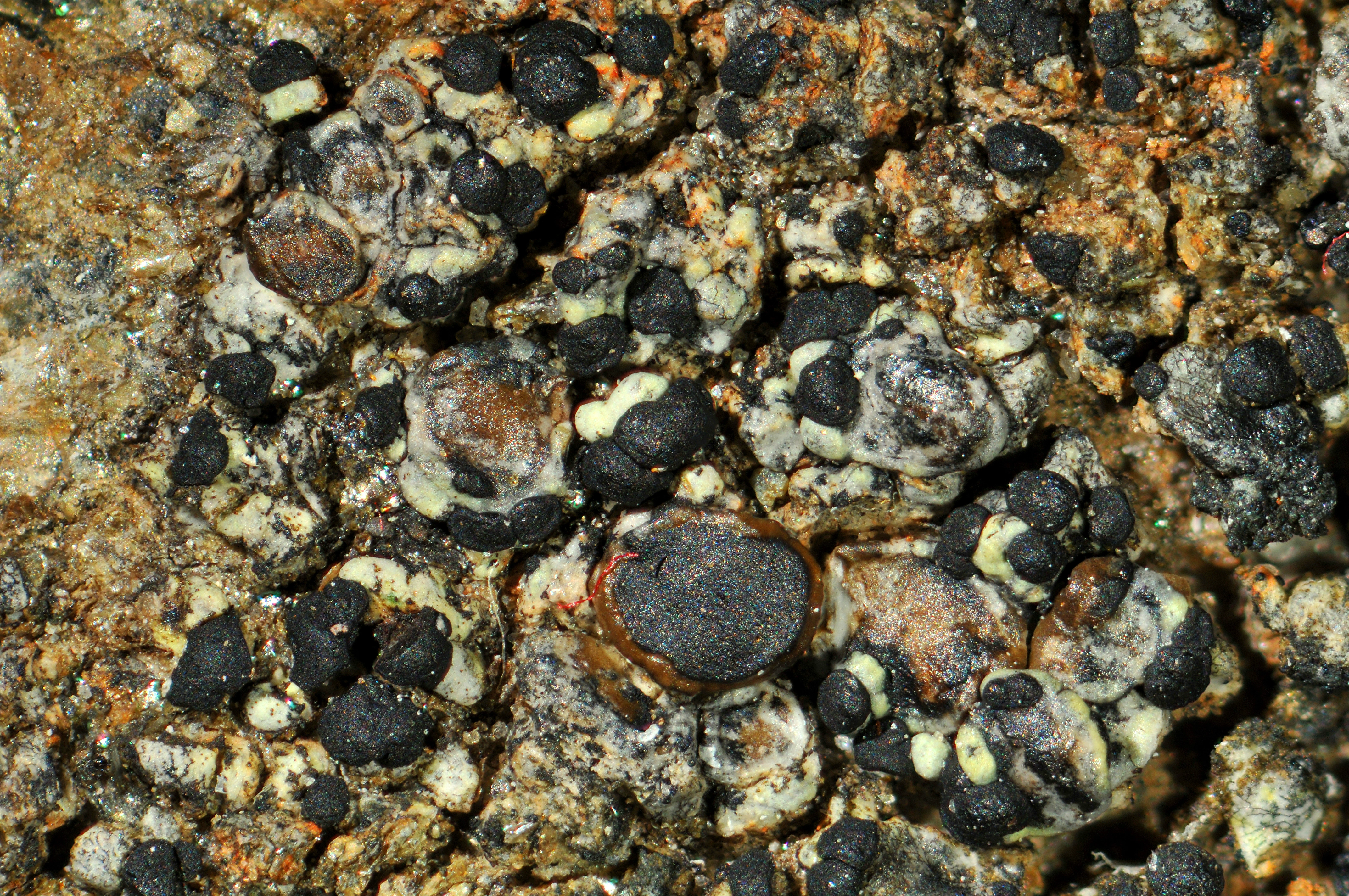Rhizocarpon dinothetes
- Innhold
- Morphology
- Chemistry
- Habitat
- Comment
- Look-alikes
Morphology
Thallus areolate, growing in the thallus of Protoparmelia species, up to 1 cm diam.; hypothallus indistinct; areolae up to 1 mm diam., greenish yellow, shiny, scattered to contiguous, more or less orbicular, plane to convex, smooth; medulla KI–. – Apothecia up to 0.7 mm diam., black, epruinose, more or less orbicular, plane to weakly convex, marginate when young, later becoming immarginate; excipulum dark reddish brown in the rim, paler in the inner part, K+ red; hypothecium pale brown to brown K–; hymenium colourless; epihymenium reddish brown, K+ red; no crystals or granules in the apothecia; ascospores 8 per ascus, muriform, dark brown, 16–22 × 9–12 µm. – Conidiomata not seen.
Chemistry
Rhizocarpic acid; spot tests: PD–, K–, C–.
Habitat
Parasitic in the thallus of Protoparmelia badia and P. memnonica on siliceous rock, mostly in alpine areas.
Comment
The species is recognized by the yellow thallus, non-amyloid medulla, muriform ascospores and host genus. Rhizocarpon viridiatrum forms larger, more continuous thalli, and has somewhat larger ascospores.

